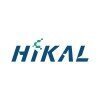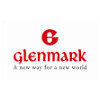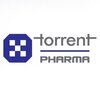Filter interviews by
Epigral Fire Officer Interview Questions and Answers
Epigral Fire Officer Interview Experiences
1 interview found
I applied via Other and was interviewed before Jun 2020. There was 1 interview round.
Interview Questionnaire
1 Question
- Q1. About Fire
Interview Preparation Tips
Top trending discussions






Interview questions from similar companies


(3 Questions)
- Q1. What is fire Tetrahedron
- Ans.
The fire Tetrahedron is a model that illustrates the four elements necessary for a fire to occur: fuel, heat, oxygen, and a chemical chain reaction.
Fuel: any material that can burn, such as wood, paper, or gasoline
Heat: the energy needed to raise the temperature of the fuel to its ignition point
Oxygen: the presence of oxygen in the air that supports combustion
Chemical chain reaction: a process where the heat produced b...
- Q2. Classification of fire
- Ans.
Fires are classified based on the type of fuel involved, such as Class A, B, C, D, and K fires.
Class A fires involve ordinary combustibles like wood and paper
Class B fires involve flammable liquids like gasoline and oil
Class C fires involve energized electrical equipment
Class D fires involve combustible metals like magnesium and titanium
Class K fires involve cooking oils and fats
- Q3. Indian standard
- Ans. Class A Class B Class C Class D Class F
Interview Preparation Tips
Fire is a chemical chain reaction
Fire officer👮 responsibility for decision maker this means to that the fire officer will need to make a decision about the safety rescue people from FIR and the best way to handle fighting the Fire coodincoodinetinating rescue efforts und Strategies for fire fighting fall upon shoulders of the
fire officer fire officer also provide administrative function for the fire department they will be the ones handle the company correspondence maintaining office records recording minutes for the fire department meetings and ordering

I was interviewed before Nov 2022.

(6 Questions)
- Q1. What is safety and
- Ans.
Safety is the practice of preventing accidents, injuries, and other potential hazards in order to protect individuals and property.
Safety involves identifying and assessing risks in order to implement measures to mitigate them.
It includes providing proper training and equipment to ensure the well-being of individuals.
Safety protocols should be regularly reviewed and updated to address new risks and challenges.
Examples ...
- Q2. What is fire elements
- Ans.
Fire elements refer to the components necessary for a fire to occur, including fuel, heat, oxygen, and a chemical chain reaction.
Fuel: Any material that can burn, such as wood, paper, or gasoline.
Heat: The energy needed to raise the temperature of the fuel to its ignition point.
Oxygen: The presence of oxygen in the air allows the fire to burn.
Chemical chain reaction: The process by which the fuel is broken down and rel
- Q3. Types of classification
- Ans.
Types of classification include hierarchical, binary, and multi-class.
Hierarchical classification involves organizing categories into a tree-like structure.
Binary classification involves categorizing data into two classes.
Multi-class classification involves categorizing data into more than two classes.
- Q4. Types fire class
- Ans. A. Ordinary combustable B.Flammable liquid C. Flammable gases D. Combustible metal E. Electrical firehouse F. Kitchen fire
- Q5. Types types of extinguisher
- Ans.
Types of extinguishers include water, foam, CO2, dry powder, and wet chemical.
Water extinguishers are suitable for Class A fires involving solid materials like wood or paper.
Foam extinguishers are effective on Class A and B fires, involving flammable liquids.
CO2 extinguishers are used for electrical fires (Class C) and flammable liquids (Class B).
Dry powder extinguishers are versatile and can be used on Class A, B, and...
- Q6. What is tetrahedron
- Ans.
A tetrahedron is a polyhedron with four triangular faces, six straight edges, and four vertex corners.
A tetrahedron is a three-dimensional shape.
It is made up of four equilateral triangles.
It has a total of six edges and four vertices.
Examples of tetrahedrons include pyramids and certain molecular structures.
Interview Preparation Tips
Skills evaluated in this interview

I was interviewed in Aug 2022.

(2 Questions)
- Q1. Fire Eupament questions
- Q2. Class of Fire class of Eupament
- Ans.
The class of fire for Eupament is not a recognized classification.
Eupament is not a recognized substance for fire classification
Fire classes are typically classified as A, B, C, D, or K
It is important for fire officers to be familiar with fire classifications to properly respond to fires
Interview Preparation Tips

I applied via Recruitment Consultant
Interview Questionnaire
12 Questions
- Q1. Building work Fire and Safety
- Q2. Building sistem work
- Ans.
Building systems refer to the various components and subsystems that make up a building's infrastructure.
Building systems include HVAC (heating, ventilation, and air conditioning), plumbing, electrical, and fire protection systems.
These systems work together to ensure the safety, comfort, and functionality of a building.
For example, the HVAC system regulates the temperature and air quality, while the fire protection sy...
- Q3. Sistem working on
- Ans.
I'm sorry, but I don't understand the question. Could you please rephrase it?
Please provide more context or clarify the question
I am unable to provide an answer without a clear understanding of the question
- Q4. Building relationships work
- Q5. Seftay rolls
- Q6. Work on the other items and Safety
- Q7. All system working
- Q8. Ready
- Q9. Building information on
- Q10. Work in the middle and out time
- Q11. Employee compensation
- Q12. President
Interview Preparation Tips


(3 Questions)
- Q1. What is fire Tetrahedron
- Ans.
The fire Tetrahedron is a model that illustrates the four elements necessary for a fire to occur: fuel, heat, oxygen, and a chemical chain reaction.
Fuel: any material that can burn, such as wood, paper, or gasoline
Heat: the energy needed to raise the temperature of the fuel to its ignition point
Oxygen: the presence of oxygen in the air that supports combustion
Chemical chain reaction: a process where the heat produced b...
- Q2. Classification of fire
- Ans.
Fires are classified based on the type of fuel involved, such as Class A, B, C, D, and K fires.
Class A fires involve ordinary combustibles like wood and paper
Class B fires involve flammable liquids like gasoline and oil
Class C fires involve energized electrical equipment
Class D fires involve combustible metals like magnesium and titanium
Class K fires involve cooking oils and fats
- Q3. Indian standard
- Ans. Class A Class B Class C Class D Class F
Interview Preparation Tips
Fire is a chemical chain reaction
Fire officer👮 responsibility for decision maker this means to that the fire officer will need to make a decision about the safety rescue people from FIR and the best way to handle fighting the Fire coodincoodinetinating rescue efforts und Strategies for fire fighting fall upon shoulders of the
fire officer fire officer also provide administrative function for the fire department they will be the ones handle the company correspondence maintaining office records recording minutes for the fire department meetings and ordering

I was interviewed before Nov 2022.

(6 Questions)
- Q1. What is safety and
- Ans.
Safety is the practice of preventing accidents, injuries, and other potential hazards in order to protect individuals and property.
Safety involves identifying and assessing risks in order to implement measures to mitigate them.
It includes providing proper training and equipment to ensure the well-being of individuals.
Safety protocols should be regularly reviewed and updated to address new risks and challenges.
Examples ...
- Q2. What is fire elements
- Ans.
Fire elements refer to the components necessary for a fire to occur, including fuel, heat, oxygen, and a chemical chain reaction.
Fuel: Any material that can burn, such as wood, paper, or gasoline.
Heat: The energy needed to raise the temperature of the fuel to its ignition point.
Oxygen: The presence of oxygen in the air allows the fire to burn.
Chemical chain reaction: The process by which the fuel is broken down and rel
- Q3. Types of classification
- Ans.
Types of classification include hierarchical, binary, and multi-class.
Hierarchical classification involves organizing categories into a tree-like structure.
Binary classification involves categorizing data into two classes.
Multi-class classification involves categorizing data into more than two classes.
- Q4. Types fire class
- Ans. A. Ordinary combustable B.Flammable liquid C. Flammable gases D. Combustible metal E. Electrical firehouse F. Kitchen fire
- Q5. Types types of extinguisher
- Ans.
Types of extinguishers include water, foam, CO2, dry powder, and wet chemical.
Water extinguishers are suitable for Class A fires involving solid materials like wood or paper.
Foam extinguishers are effective on Class A and B fires, involving flammable liquids.
CO2 extinguishers are used for electrical fires (Class C) and flammable liquids (Class B).
Dry powder extinguishers are versatile and can be used on Class A, B, and...
- Q6. What is tetrahedron
- Ans.
A tetrahedron is a polyhedron with four triangular faces, six straight edges, and four vertex corners.
A tetrahedron is a three-dimensional shape.
It is made up of four equilateral triangles.
It has a total of six edges and four vertices.
Examples of tetrahedrons include pyramids and certain molecular structures.
Interview Preparation Tips
Skills evaluated in this interview

I was interviewed in Aug 2022.

(2 Questions)
- Q1. Fire Eupament questions
- Q2. Class of Fire class of Eupament
- Ans.
The class of fire for Eupament is not a recognized classification.
Eupament is not a recognized substance for fire classification
Fire classes are typically classified as A, B, C, D, or K
It is important for fire officers to be familiar with fire classifications to properly respond to fires
Interview Preparation Tips

I applied via Naukri.com and was interviewed in Oct 2022. There were 2 interview rounds.

(2 Questions)
- Q1. Fire protection system
- Q2. Fire Active - Passives
Interview Preparation Tips
Fire protection system provided to plants hazard regards

I applied via Recruitment Consultant
Interview Questionnaire
12 Questions
- Q1. Building work Fire and Safety
- Q2. Building sistem work
- Ans.
Building systems refer to the various components and subsystems that make up a building's infrastructure.
Building systems include HVAC (heating, ventilation, and air conditioning), plumbing, electrical, and fire protection systems.
These systems work together to ensure the safety, comfort, and functionality of a building.
For example, the HVAC system regulates the temperature and air quality, while the fire protection sy...
- Q3. Sistem working on
- Ans.
I'm sorry, but I don't understand the question. Could you please rephrase it?
Please provide more context or clarify the question
I am unable to provide an answer without a clear understanding of the question
- Q4. Building relationships work
- Q5. Seftay rolls
- Q6. Work on the other items and Safety
- Q7. All system working
- Q8. Ready
- Q9. Building information on
- Q10. Work in the middle and out time
- Q11. Employee compensation
- Q12. President
Interview Preparation Tips
Tell us how to improve this page.
Epigral Interviews By Designations
- Epigral Electrical Technician Interview Questions
- Epigral Engineer Interview Questions
- Epigral Assistant Manager Interview Questions
- Epigral Chemical Process Engineer Interview Questions
- Epigral Deputy General Manager Materials Interview Questions
- Epigral Diploma Engineer Interview Questions
- Epigral Executive Interview Questions
- Epigral Fire Officer Interview Questions
- Show more
Interview Questions for Popular Designations
- Fire & Safety Officer Interview Questions
- Fireman Interview Questions
- Fire & Safety Supervisor Interview Questions
- Fire Supervisor Interview Questions
- Fire Alarm Technician Interview Questions
- Fire Technician Interview Questions
- Fireman and Safety Interview Questions
- Fire Fighting Technician Interview Questions
- Show more
Interview Questions from Similar Companies
|
Engineer
75
salaries
| ₹1.9 L/yr - ₹7 L/yr |
|
Senior Engineer
61
salaries
| ₹3.9 L/yr - ₹10.2 L/yr |
|
Plant Operator
51
salaries
| ₹1.6 L/yr - ₹4.2 L/yr |
|
Process Engineer
45
salaries
| ₹2.1 L/yr - ₹6.3 L/yr |
|
Assistant Manager
41
salaries
| ₹6 L/yr - ₹12 L/yr |

Biocon Limited

DRJ & CO

Sun Pharmaceutical Industries

Cipla
- Home >
- Interviews >
- Epigral Interview Questions >
- Epigral Fire Officer Interview Questions










